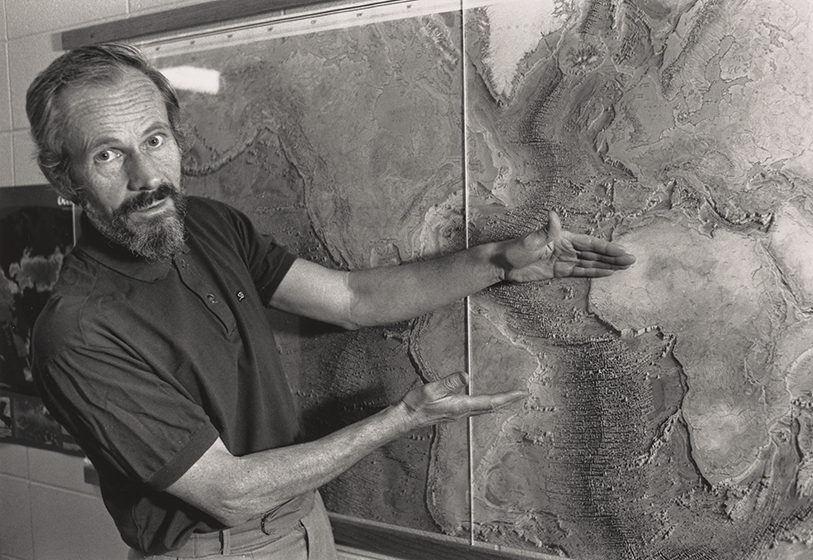In Memoriam: Stefan Hastenrath
March 25, 2025

The University of Wisconsin–Madison Department of Atmospheric and Oceanic Sciences (AOS) is deeply saddened to announce the passing of Stefan Hastenrath, AOS Professor Emeritus and an internationally renowned climate scientist. Hastenrath, who served on the AOS faculty from 1967 until his retirement in 1999, made groundbreaking contributions to the understanding of large-scale ocean-atmosphere interactions and tropical glaciers. His work provided key insights into global climate processes, earning him the prestigious Sverdrup Gold Medal from the American Meteorological Society in 2001.
Hastenrath was born in Budapest, Hungary in 1934, and in 1959 completed his Doctorate at the University of Bonn titled “On the vertical distribution of frost cycle and snow cover conditions in the Alps” under the guidance of the famous Physical Geographer, Carl Troll. After serving as an Assistant Professor at the University of Cologne for one year, he became Chief of the Climatology Division in the National Meteorological Service of El Salvador from 1960–1963. In 1963 he moved to Wisconsin where he held various positions at the University of Wisconsin–Madison and UW-Milwaukee until he joined the faculty at UW–Madison as an Associate Professor in 1967.
Fluent in several languages, Hastenrath brought his expertise beyond UW–Madison to institutions across the globe in Brazil, Colombia, France, Kenya, South Africa, the United Kingdom, and Venezuela. His work laid a foundation for understanding both global oceanography and interannual climate variation. He pioneered the use of ship observations to study annual energy fluctuations between the ocean and atmosphere, linked the shrinking of tropical glaciers – such as those on Mount Kenya – to ocean warming, and developed methods for predicting rainfall and drought in the tropics based on sea surface temperatures. Throughout his research he valued and respected the contributions of dozens of international collaborators, and all who have contributed to our science. In his words, his work was only possible due to “the seven decades of observations taken through the humble and heroic effort of thousands of sailors and observers”.
In addition to his prolific research portfolio, Hastenrath authored fifteen influential books and book chapters, including but not limited to Climate and Circulation of the Tropics, The Glaciers of Equatorial East Africa, The Glaciation of Ecuadorian Andes, Climatic Atlas of the Indian Ocean, and Climatic Atlas of the Tropical Atlantic and Eastern Pacific Ocean. He supervised 21 M.S. and 10 Ph.D. students, and his undergraduate and graduate courses, particularly Tropical Meteorology and Dynamic Climatology, were among the most popular in the department.
One of Hastenrath’s latest projects included documenting changes in the extent of tropical glaciers since the 1800’s in Recession of Equatorial Glaciers: A Photo Documentation . In this book, Hastenrath draws on his own personal travels and his collaborations with numerous scientists around the world to provide an archival record of the retreat of tropical glaciers. It is fitting that, in observing and compiling the images for this work, Hastenrath is both revisiting the subject of his doctoral work and continuing the “humble and heroic efforts” upon which our future scientific understanding will be founded.
Hastenrath’s legacy as a scholar and mentor will endure in AOS and the broader climate science community for years to come. Condolences may be sent to communications@aos.wisc.edu.
